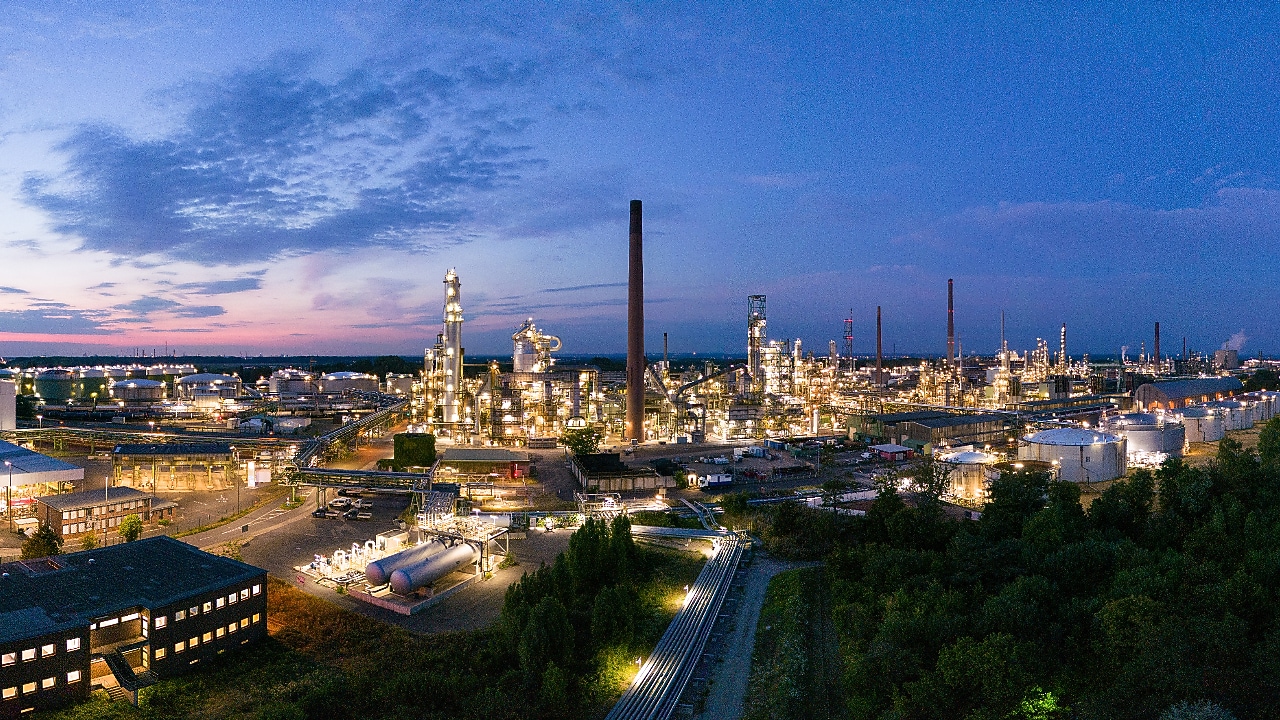
The rules of the energy transition just changed. A new report from DNV reveals that energy security concerns are now cutting global emissions faster than climate policy alone, creating unexpected momentum for hydrogen production, carbon capture, and nuclear power across North America and beyond. The shift represents a fundamental change in how nations approach decarbonization, no longer driven solely by environmental goals but by the strategic imperative to control their own energy supply.
According to DNV's Energy Transition Outlook 2025, energy security policies are reducing global emissions by 1-2% per year, outpacing the effects of traditional climate-focused regulations. This means technologies like blue hydrogen, carbon capture and storage (CCS), and advanced nuclear are getting a boost not because they're green, but because they're domestically sourced. For North American energy companies and project developers, this creates a new playbook for securing funding and political support.

"Security has become the dominant driver of energy policy, and as our forecast shows, this is in sum accelerating the shift to renewables."
Remi Eriksen, Group President and CEO, DNV
The Security Advantage
The DNV report forecasts that nuclear power will reach 9% of global electricity supply by 2060, a figure that would be one-third lower without energy security considerations. That's significant for the hydrogen hub ecosystem, where nuclear-powered electrolysis could provide steady, carbon-free hydrogen production at scale. Unlike renewable-dependent green hydrogen, nuclear-powered facilities can operate around the clock without weather constraints.
In Europe, the effect is even more pronounced. The region's pivot away from imported fossil fuels following geopolitical disruptions is forecast to cut emissions by 9% by 2050 compared to scenarios without these security measures. While the US faces its own policy headwinds, with emission reductions delayed by roughly five years due to recent federal policy shifts, the underlying economics of energy independence remain compelling.
>> RELATED: Policy Reversals In The US Will Only Have A Marginal Impact On The Global Energy Transition – Report

What This Means for Hydrogen and CCS Projects
For project developers in the hydrogen and carbon management space, this shift opens new pathways to funding and approval. A blue hydrogen project paired with CCS can now be pitched not just as a climate solution but as an energy security play, using domestic natural gas to produce fuel that doesn't depend on international supply chains. Similarly, carbon storage infrastructure that allows continued use of existing industrial facilities becomes a way to maintain energy independence while meeting environmental goals.
The DNV outlook projects the global energy mix will split almost evenly, 51% fossil to 49% non-fossil, by 2050. This balanced transition creates sustained demand for technologies that can bridge the gap. Direct air capture, bioenergy with carbon capture and storage (BECCS), and sustainable aviation fuel all fit into this framework, offering ways to decarbonize hard-to-abate sectors while relying on domestic resources and infrastructure.
Key Forecast Highlights from DNV
- Energy security policies cut emissions 1-2% per year, faster than climate policy alone
- Nuclear power reaches 9% of electricity by 2060, one-third higher due to security concerns
- Europe sees 9% lower emissions by 2050 from pivoting away from imported fossil fuels
- US policy delays add 500-1,000 million tonnes CO₂ annually but don't derail global transition
- Global energy mix hits 51% fossil, 49% non-fossil by 2050, creating sustained demand for bridging technologies
North American Opportunity
Despite federal policy uncertainty in the United States, the energy security angle provides state and regional governments with a compelling rationale to support decarbonization projects. States with existing oil and gas infrastructure can leverage that expertise for CCS deployment. Regions with manufacturing bases have strong incentives to develop clean hydrogen supply to keep those facilities competitive.
Canada's position looks particularly strong in this framework. With abundant renewable energy resources, existing hydrogen expertise, and a political climate supportive of energy security investments, Canadian provinces are well-positioned to become major exporters of low-carbon hydrogen and carbon management services. The country's existing LNG export infrastructure could potentially be retrofitted or expanded to handle ammonia and hydrogen carriers.

>> In Other News: Low-Profile Dubai Operator Emerges Behind Europe’s First Blue Ammonia Shipment
Technologies Positioned to Benefit
Several specific technology pathways gain advantages under the energy security framework. Here's how they stack up:
1. Blue Hydrogen with CCS: Uses domestic natural gas as feedstock, captures carbon emissions, and produces fuel that can be stored and transported using existing infrastructure. The security angle is strong because it reduces dependence on imported energy while still cutting emissions. North American projects can tap into existing gas pipeline networks and geological storage sites, particularly in the Gulf Coast region.
2. Nuclear-Powered Electrolysis: Combines baseload nuclear generation with water splitting to produce hydrogen around the clock. This approach eliminates weather-dependent variability and provides steady supply for industrial users. Several US states with existing nuclear facilities are exploring this pathway, including Illinois, Pennsylvania, and South Carolina.
3. Carbon Capture on Industrial Facilities: Allows continued operation of cement plants, steel mills, and chemical facilities while dramatically cutting their carbon footprint. From an energy security perspective, this means maintaining domestic manufacturing capacity without sacrificing environmental progress. The Gulf Coast has emerged as a major hub for these projects due to ideal geology for CO₂ storage.
4. Ammonia as Energy Carrier: Ammonia can be produced from hydrogen and nitrogen, stored more easily than pure hydrogen, and transported globally. For countries seeking energy security, ammonia offers a way to export and import energy in a carbon-neutral form. Blue ammonia projects in Texas and Louisiana are positioning North America as a major exporter, with several ports exploring ammonia bunkering infrastructure to support this emerging trade.

"With well-designed energy transition policies, we can have the best energy security, we can bring the prices down, we can bring prosperity to the people and we can create jobs."
Fatih Birol, Executive Director, International Energy Agency
The Hard-to-Abate Sectors
DNV's outlook specifically notes that while technology progress is driving rapid advances in electrification and renewable power, the harder-to-decarbonize sectors still need substantial policy support. This is where the energy security argument becomes particularly powerful. Aviation can't easily electrify long-haul routes, making sustainable aviation fuel a national security issue for countries that want to maintain air connectivity. Heavy industry can't relocate easily, making CCS a way to keep jobs and economic activity domestic.
For project developers, this means framing proposals around both climate and security benefits. A SAF facility isn't just reducing aviation emissions, it's ensuring domestic fuel supply for airlines. A hydrogen production facility isn't just clean energy, it's reducing dependence on imported fuels. This dual narrative can unlock support from constituencies that might not prioritize climate action but strongly value energy independence.
Regional Variations in Opportunity
The energy security framework is creating different opportunities across North American regions based on their existing assets and resources. The Gulf Coast's established petrochemical infrastructure and geological formations are attracting major CCS investments, while regions with agricultural bases are well-positioned for biogas and renewable fuels. Areas with strong renewable energy potential can focus on green hydrogen for industrial applications or export markets.
Each region brings distinct advantages to the table. Coastal areas benefit from export infrastructure and offshore wind potential. States with existing oil and gas expertise can apply that knowledge to carbon management projects. Agricultural regions have ready access to biomass feedstocks for bioenergy and biofuels production.
Policy Still Matters
While energy security provides new momentum, policy support remains critical for scaling these technologies. The Inflation Reduction Act's 45Q tax credits for carbon capture and 45V credits for clean hydrogen are still essential for project economics. State-level policies like California's Low Carbon Fuel Standard and New York's Climate Leadership and Community Protection Act create markets for clean fuels and carbon removal.
The key difference is that projects can now build support by appealing to energy security concerns alongside environmental benefits. A regional hydrogen hub becomes infrastructure for energy independence. A carbon storage hub becomes a way to maintain industrial competitiveness. This reframing can help projects survive political transitions that might otherwise threaten climate-focused policies.
Looking Forward
DNV's forecast shows global emissions dropping 43% by 2050 and reaching net zero sometime after 2090. That timeline is too slow to meet Paris Agreement targets, but the energy security driver adds momentum that pure climate policy hasn't achieved. For North American companies working on hydrogen production, carbon capture, sustainable fuels, and carbon removal, the message is clear. These technologies aren't just environmental solutions anymore, they're strategic assets.
The transition to a balanced energy mix by mid-century creates decades of sustained demand for the technologies that can bridge fossil and non-fossil energy sources. Projects that can deliver both emissions reductions and energy security will have the strongest position in this evolving landscape. That's the new opportunity, and it's bigger than climate policy alone could create.
Subscribe to the newsletter
Daily decarbonization data and news delivered to your inbox
Follow the money flow of climate, technology, and energy investments to uncover new opportunities and jobs.
Latest issues
-
Canada Just Made CCUS Way More Profitable
Inside This Issue 💼 Canada Unlocks EOR for Federal Tax Credits in Landmark Policy Shift 🚀 Carbontech Funding Opens as CDR Sector Pushes for Net-Zero Standard Revisions 💧 CHARBONE Confirms its Firs...
-
The $13.6B Oilfield Deal That's Actually About Clean Energy
Inside This Issue 💼 The $13.6B Oilfield Deal That's Actually About Clean Energy 💸 Waga Energy Signs a $180M Debt Financing to Accelerate Its Expansion in the US 🌫️ Deep Sky Launches Operations of ...
-
Why Texas, Arizona & West Virginia Are Making History
Inside This Issue 🗺️ Three States Just Took Control of CCS Permitting. Here's What It Means. ⛏️ QIMC's U.S. SPV, Orvian, Awarded Two RGRAs From the State of Minnesota to Advance Next-Generation Na...
Company Announcements
-
Research engineer Casey Jones inspects a drying belt at [**Alithic**](https://alithic.com/)’s demonstration plant in Madison, which combines carbon dioxide from the atmosphere with ash and other...
-
HOUSTON, Dec. 01, 2025 (GLOBE NEWSWIRE) -- HyOrc Corporation (OTC: HYOR), an SEC-reporting, PCAOB audited, and ISO certified clean-energy company developing multi-fuel engines, green methanol produ...
-
CHARBONE Confirms its First Hydrogen Production in Sorel-Tracy
Brossard, Quebec – TheNewswire – December 1, 2025 – CHARBONE CORPORATION (TSXV: CH; OTCQB: CHHYF; FSE: K47) (“CHARBONE” or the “Company”), a North American producer and distributor specializing in ...
-
MAX Power Accelerates CEO Transition as Lawson Enters Next Phase of Natural Hydrogen Testing
Accelerated start for Ran Narayanasamy as CEO aligns with service rig mobilization at Lawson, multi-well follow-up at Bracken and continued buildout of AI-assisted Large Earth Model Integration (MA...